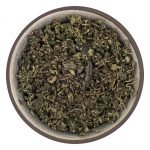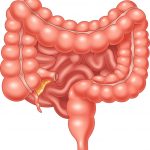Eosinophilic Gastroenteritis: How Naturopathic Physicians Can Help
ANDREA GRUSZECKI, ND
Eosinophilic gastrointestinal disorders (EGIDs) are a relatively recently described cluster of conditions that can often go overlooked. EGIDs are likely underdiagnosed and rarely recognized, although pathology may be present in as many as 1/20 patients with a history of current or childhood IgE food or inhalant allergy.1,2 Since many patients visit naturopathic doctors seeking relief from gastrointestinal symptoms, it is important to recognize these conditions. If left untreated, they can affect the quality of life and contribute to malabsorption and malnutrition.3 Naturopathic physicians may be uniquely qualified to offer these individuals comprehensive, science-based lifestyle and nutritional treatment plans.4,5
What are EGIDs?
Eosinophilic gastrointestinal disorders are characterized by eosinophilic infiltration of either the gastrointestinal mucosa or bowel wall.2,6 EGIDs may be considered in a differential diagnosis when there is:
- GI involvement (abdominal pain, nausea, vomiting, diarrhea, or weight loss)
- Eosinophilic infiltration of the GI tract
- No evidence of eosinophilic disease in other organs
- No evidence of parasitic infection
The condition often has a waxing and waning presentation, and symptoms vary depending upon location within the GI tract and the layer of the intestine involved. The best understood and most studied EGID is eosinophilic esophagitis (EOE).2,7 An overview of the contributing factors for this condition may help the alert clinician recognize other EGIDs when encountered in practice.
Pathophysiology
When developing a naturopathic treatment plan, it is essential to understand the inflammatory signaling pathways that drive the loss of immunotolerance in EGIDs. The process begins in childhood with the development of IgE-mediated type I hypersensitivity reactions to foods or aeroallergens.8,9 In adult EGID patients, allergic reactions may persist; however, the process shifts from IgE-mediated reactions to non-IgE-mediated processes.10,11
The non-IgE-mediated pathway appears to be propagated, in large part, through type 2 innate lymphoid cells (ILC2).12 ILC2s are important in maintaining epithelial barriers and are found in the gut, lung, skin, and nasal tissues. ILC2s have also been reported in the bone marrow, where eosinophils are produced. ILC2s can produce the same cytokines as Th2 cells without an antigen trigger. ILC2s are increased in the inflamed tissues of allergy patients and can perpetuate Th2-type responses because there are common cytokine signals in IgE- and non-IgE-mediated inflammation.12 Eosinophil activation and can be induced by either Th2 or the non-IgE mediated inflammatory pathways.12,13 The induction of the Type 2 inflammatory cascade by the non-IgE-mediated pathway, combined with signaling from Th2 cells and gut toll-like receptors, can result in the release of interleukins and activating factors that promote eosinophil activation and IgG4 production.
A trigger for non-IgE mediated Type 2 inflammatory reactions can be environmental exposure to detergents, tobacco, ozone, particulate matter, diesel exhaust, nanoparticles, or microplastics.14 Some of these toxic exposures are mediated through the aryl hydrocarbon receptor (AhR).15 These substances can provoke both IgE-antigen Type 2 responses and non-IgE mediated Type 2 responses in the skin, lung, and gastrointestinal system. Under normal circumstances, when exposed to a diverse gastrointestinal microbiome and a variety of plant foods, AhRs promote tolerance and homeostasis in the gastrointestinal environment.5 AhR signaling in T-regulatory cells may be particularly important for immunotolerance.16
Dysregulated AhR signaling can shift Th1/Th2/Th17 ratios. Th17 cells are associated with environmental exposure, autoimmunity, and inflammatory bowel disease. Dysbiotic shifts and the presence of pathogenic microbes may also dysregulate Th17 cells.17,18 In human EOE studies, TH17 cells are elevated. Th17 cells also have high AhR expression, and it is likely that TH17 cells are also involved in the pathophysiology of other EGIDs.19
Patient Presentation
Patients with EGIDs are likely misdiagnosed as having irritable bowel syndrome or other disorders.20 It is important to take a thorough history and have the appropriate labs to identify patients with EGIDs.
History
Although EGIDs are considered very rare in the general population, they are far more common in those with a history of allergy. In patients diagnosed with EGIDs, 50-75% have a personal or family history of allergy in addition to their gastrointestinal symptoms. Allergy history may include associated conditions such as asthma, rhinitis, eczema, and drug or seasonal allergies.6 In a subset of EOE patients, aeroallergens, such as pollens, can be active in the digestive tract and are known triggers.21 Exposure to allergens can result in symptom “flares” in these patients. Animal studies confirm that respiratory antigen exposure can result in elevated esophageal eosinophils, free eosinophil granules, and epithelial hyperplasia consistent with the features of human EOE.22
Signs and Symptoms
In addition to systemic or local eosinophilia and allergy history, EGID patients have gastrointestinal symptoms that vary by location in the GI tract.2,6 The most common form of EGIDs is in the mucosa layer of the GI tract. Mucosal EGIDs are usually localized to the esophagus, stomach, or small intestine; the large intestine is not commonly involved. Common symptoms of mucosal EGIDs include vomiting, diarrhea, and abdominal pain. Symptoms may progress to include GI bleeding and malabsorption due to protein wasting. Malabsorption may contribute to additional symptoms in children and adolescents, including, failure to thrive, poor growth, anemia, delayed puberty, and amenorrhea.
If the EGIDs are localized to the muscle layers of the gut, bowel strictures, bowel wall thickening, reduced peristalsis, and decreased distensibility may ultimately result in bowel obstruction. Involvement in the serosal layer will present with ascites and peritoneal inflammation.
Differential Diagnosis
EGIDs are a diagnosis of exclusion and it is important to rule out other likely causes of eosinophilia. These can include allergy and atopic disorders, intestinal parasites, infections, toxic metals, adrenal hypofunction, medication reactions, hypereosinophilic syndrome, gluten or cow’s milk enteropathy, and a variety of other medical conditions.23,24 For additional information regarding an overview of eosinophilia, Nutman’s 2007 review is an excellent synopsis of the evaluation and differential diagnosis of the condition.25
Workup
Endoscopy with Biopsy
There are many steps in the diagnosis of EGIDs, but an endoscopy with biopsy is the main method of identification. The gold standard for diagnosis is the histopathological confirmation of >15-50 eosinophils per high-power field, for at least 6 biopsy samples, from different sites in the lamina propria.26 In advanced EOE/EGIDs, intraepithelial IgG4 deposits may be found in biopsy tissues; these deposits derive from IgG4-positive plasma cells in the lamina propria of the gut wall.27
Blood Work
EGIDs present with eosinophilia (>450-500 eosinophils/mL blood) in roughly 80% of patients. In addition to unexplained eosinophilia, other laboratory findings may include elevated erythrocyte sedimentation rate, low level quantitative immunoglobins, and hypoalbuminemia.
Allergy Testing
In children, EOE has been associated with IgE-food allergy. 28 However, adults are more likely to experience an increase in total IgE and not food specific IgE. It is common to use skin prick testing to identify inhalant and food allergens, but skin prick testing in adult EOE patients only predicts 13% of symptom-causing foods.29
While IgE testing for adults rarely provides answers, there are positive correlations between food-specific plasma IgG4 tests and symptomology. 30 IgG4 testing can also be used to guide patient-specific elimination diets.
Stool Testing
A stool sample may not be necessary, but it can help identify some abnormalities seen in patients with EGIDs. Patients with EGIDs have an increased level of alpha-1 antitrypsin in their feces. The alpha-1 antitrypsin test (24-hour collection) can indicate a patient’s ability inability to digest and absorb proteins. Stool sample testing can also help rule out parasitic infections.
Imaging Studies
While there are some laboratory findings associated with EGIDs, patients are often misdiagnosed or underdiagnosed due to the lack of specific findings from incomplete radiological and/or endoscopic studies.2,6 This is why it is important to continue to investigate when eosinophilic involvement is suspected.
Treatment
The mainstays of conventional treatment for EGIDs is the elimination of common allergens and the application of glucocorticoid medications.2,6 Naturopathic physicians are positioned to correct underlying imbalances that may contribute to the loss of immune tolerance and Type 2 immune responses. These imbalances include the Western diet, sedentary lifestyle, adrenal hypofunction, digestive disorders, microbiome disruption, and toxic exposures. There are a variety of natural and nutritional therapies that may be helpful in moderating the inflammatory pathway receptors and leukotrienes reviewed in this article.5 Nutraceuticals and other therapies may be considered as either, instead of, or in addition to the few pharmaceutical and conventional medical treatments available.2,6
Diet
It has been documented that an IgG4-guided elimination diet can reduce symptom severity of EGIDs and, per biopsy confirmation, allows for improved tissue healing and repair.30 When research subjects eliminated the foods causing elevated IgG4 levels, their food specific IgG4 levels declined. The decline in IgG4 levels correlated with symptom and tissue improvement. When trigger foods were reintroduced to the diet, symptoms and tissue changes also returned.30
It may be worthwhile to consider educating EGID patients on the benefits of a whole foods diet rich in plants while they are on the elimination diet.5 Especially since plant flavonoids in the diet can increase hemostatic signaling for AhR, a likely pathway in the progression of EGIDs. Another benefit of a whole foods diet rich in plants is that dietary fiber increases microbiome diversity and the production of short-chain fatty acids. Diets high in non-digestible fiber have been associated with a decreased incidence of allergy, wheezing and atopic eczema.31
Another dietary approach to consider for EGIDs is an elemental diet. Elemental diets can provide an immunological and functional respite for the gastrointestinal tract. In one study, 4 weeks of an amino acid-based elemental diet reduced inflammation, serum IgE levels, and eosinophil counts.32 In addition to improved endoscopy findings, 88% of study participants became asymptomatic. A small study on healthy individuals demonstrated that a half-elemental diet significantly shifted bacterial populations of the gut microbiome, which in turn affected the production of SCFAs and secondary bile acids.33 In individuals with insufficient SCFAs, it may be prudent to include a fiber supplement to promote their generation.
Medication
The most common pharmaceutical treatment is glucocorticoids. Inhaled fluticasone, budesonide oral viscous suspension, cromolyn, and leukotriene receptor antagonists have all been tried with limited success for EGID patients. While a short course of glucocorticoids at the outset of treatment may be of benefit in more advanced cases, in general, avoidance of glucocorticoids long-term can prevent significant side effects.34,35
Additional Strategies
The following 4 interventions can help improve immune tolerance, reduce reactivity, and address obstacles to cure that are important considerations when treating EGIDs.
- Address adrenal hypofunction (fatigue) – Adequate levels of cortisol are necessary for normal immune function and have been shown to inhibit the release of thymic stromal lymphopoietin and the inflammatory actions of Th9 cells.8,36,37
- Initiate stress management techniques – Techniques like mindfulness-based relaxation and meditation can help minimize inflammation (C-reactive protein, Th1 cytokines) and improve gastrointestinal function.38-40
- Correct digestion – Healing the gut, normalizing gastrointestinal motility, and supporting a diverse microbiome can help minimize inflammation in the GI tract and potentially blunt symptom flares.5
- Detoxify – Helping patients identify and avoid toxic exposures, while supporting detoxification processes, can help minimize disruptions to AhR signaling.41
Summary
EGIDs, similar to eosinophilic esophagitis, are a cluster of gastrointestinal conditions that are similar in pathophysiology, but that can vary widely in patient presentation and symptom progression. Naturopathic physicians are likely to see such patients in practice because, without a definitive biopsy, these people are likely to be misdiagnosed with functional gastrointestinal disorders. Physicians should suspect EGIDs in any patient with unexplained eosinophilia, a history of allergies, and gastrointestinal complaints.
References
- Dellon ES, Jensen ET, Martin CF, et al. Prevalence of eosinophilic esophagitis in the United States. Clin Gastroenterol Hepatol. 2014;12(4):589-596.e1.
- Munjal A, Al-Sabban A, Bull-Henry K. Eosinophilic Enteritis: A Delayed Diagnosis. J Investig Med High Impact Case Rep. 2017; 5(4):2324709617734246.
- Frass M, Strassl RP, Friehs H, et al. Use and acceptance of complementary and alternative medicine among the general population and medical personnel: a systematic review. Ochsner J. 2012;12(1):45-56.
- Fleming S, Gutknecht N. Naturopathy and the Primary Care Practice. Prim Care. 2010; 37(1):119-136.
- McKenzie C, Tan J, Macia L, Mackay CR. The nutrition-gut microbiome-physiology axis and allergic diseases. Immunol Rev. 2017;278(1):277-295.
- Ingle S, Hinge C. Eosinophilic gastroenteritis: An unusual type of gastroenteritis. World J Gastroenterol. 2013;19(31):5061–5066.
- Simon D, Straumann A, Hans-Uwe S. Eosinophilic Esophagitis and Allergy. Dig Dis. 2014;32:30-33.
- Hong H, Liao S, Chen F, Yang Q. Role of IL-25, IL-33, and TSLP in triggering united airway diseases toward type 2 inflammation. Allergy. 2020;75(11):2794-2804.
- Loh W, Tang MLK. The Epidemiology of Food Allergy in the Global Context. Int J Environ Res Public Health. 2018;15(9):2043.
- Fardel O. Cytokines as molecular targets for aryl hydrocarbon receptor ligands: implications for toxicity and xenobiotic detoxification. Expert Opin Drug Metab Toxicol. 2013;9(2):141-52.
- Schulz VJ, Smit JJ, Pieters RH. The aryl hydrocarbon receptor and food allergy. Vet Q. 2013;33(2):94-107.
- Li S, Bostick JW, Zhou L. Regulation of Innate Lymphoid Cells by Aryl Hydrocarbon Receptor. Front Immunol. 2018;8:1909.
- Michailidou D, Schwartz DM, Mustelin T, Hughes GC. Allergic Aspects of IgG4-Related Disease: Implications for Pathogenesis and Therapy. Front Immunol. 2021;12:693192.
- Celebi Sözener Z, Cevhertas L, Nadeau K, et al. Environmental factors in epithelial barrier dysfunction. J Allergy Clin Immunol. 2020;145(6):1517-1528.
- Lilienthal GM, Rahmöller J, Petry J, et al. Potential of Murine IgG1 and Human IgG4 to Inhibit the Classical Complement and Fcγ Receptor Activation Pathways. Front Immunol. 2018;9:958.
- Ye J, Qiu J, Bostick JW, et al. The Aryl Hydrocarbon Receptor Preferentially Marks and Promotes Gut Regulatory T Cells. Cell Rep. 2017;21(8):2277-2290.
- Hemdan NY, Abu El-Saad AM, Sack U. The role of T helper (TH)17 cells as a double-edged sword in the interplay of infection and autoimmunity with a focus on xenobiotic-induced immunomodulation. Clin Dev Immunol. 2013;2013:374769.
- Symons A, Budelsky AL, Towne JE. Are Th17 cells in the gut pathogenic or protective? Mucosal Immunol. 2012;5(1):4-6.
- Sindher S, Monaco-Shawver L, Berry A, et al. Differences in CD4IL-17+ in Children and Adults with Eosinophilic Esophagitis. J Allergy Clin Immunol. 2016;137(2 Supp1):AB230.
- Talley NJ. Evolution of the Diagnosis of Functional Gut Disorders: Is an Objective Positive Diagnostic Approach Within Reach? Clin Transl Gastroenterol. 2015;6(7):e104.
- Cafone J, Capucilli P, Hill DA, Spergel JM. Eosinophilic esophagitis during sublingual and oral allergen immunotherapy. Curr Opin Allergy Clin Immunol. 2019;19(4):350-357.
- Mishra A, Hogan SP, Brandt EB, Rothenberg ME. An etiological role for aeroallergens and eosinophils in experimental esophagitis. J Clin Invest. 2001;107(1):83-90.
- Wells EM, Bonfield TL, Dearborn DG, Jackson LW. The relationship of blood lead with immunoglobulin E, eosinophils, and asthma among children: NHANES 2005-2006. Int J Hyg Environ Health. 2014;217(2-3):196-204.
- Beishuizen A, Vermes I, Hylkema BS, Haanen C. Relative eosinophilia and functional adrenal insufficiency in critically ill patients. Lancet. 1999;353(9165):1675-1676.
- Nutman T. Evaluation and differential diagnosis of marked, persistent eosinophilia. Immunol Allergy Clin North Am. 2007; 27(3):529-549.
- Dellon ES, Liacouras CA, Molina-Infante J, et al. Updated International Consensus Diagnostic Criteria for Eosinophilic Esophagitis: Proceedings of the AGREE Conference. Gastroenterology. 2018;155(4):1022-1033.e10.
- Zukerberg L, Mahadevan K, Selig M, Deshpande V. Oesophageal intrasquamous IgG4 deposits: an adjunctive marker to distinguish eosinophilic oesophagitis from reflux oesophagitis. Histopathology. 2016;68(7):968-976.
- Maurer M, Altrichter S, Schmetzer O, et al. Immunoglobulin E-Mediated Autoimmunity. Front Immunol. 2018;9:689.
- Gonsalves N, Yang GY, Doerfler B, et al. Elimination diet effectively treats eosinophilic esophagitis in adults; food reintroduction identifies causative factors. Gastroenterology. 2012;142(7):1451-1459.e1.
- Wright BL, Kulis M, Guo R, et al. Food-specific IgG4 is associated with eosinophilic esophagitis. J Allergy Clin Immunol. 2016;138(4):1190-1192.e3.
- Ellwood P, Asher MI, Björkstén B, et al. Diet and asthma, allergic rhinoconjunctivitis and atopic eczema symptom prevalence: an ecological analysis of the International Study of Asthma and Allergies in Childhood (ISAAC) data. ISAAC Phase One Study Group. Eur Respir J. 2001;17(3):436-443.
- Warners MJ, Vlieg-Boerstra BJ, Verheij J, et al. Elemental diet decreases inflammation and improves symptoms in adult eosinophilic oesophagitis patients. Aliment Pharmacol Ther. 2017;45(6):777-787.
- Miyosi j, Saito D, Nakamura M, et al. Half-Elemental Diet Shifts the Human Intestinal Bacterial Compositions and Metabolites: A Pilot Study with Healthy Individuals. Gastroenterol Res Pract. 2020; 2020: 7086939.
- Ocejo A, Correa R. Methylprednisolone. In: StatPearls. StatPearls Publishing: 2019. Available at: https://www.ncbi.nlm.nih.gov/books/NBK544340. Accessed December 6, 2021.
- Waljee AK, Rogers MA, Lin P, et al. Short term use of oral corticosteroids and related harms among adults in the United States: population based cohort study. BMJ. 2017;357:j1415.
- Chen J, Guan L, Tang L, et al. T Helper 9 Cells: A New Player in Immune-Related Diseases. DNA Cell Biol. 2019;38(10):1040-1047.
- Viveros-Paredes JM, Puebla-Pérez AM, Gutiérrez-Coronado O, et al. Dysregulation of the Th1/Th2 cytokine profile is associated with immunosuppression induced by hypothalamic-pituitary-adrenal axis activation in mice. Int Immunopharmacol. 2006;6(5):774-781.
- Konturek PC, Brzozowski T, Konturek SJ. Stress and the gut: pathophysiology, clinical consequences, diagnostic approach and treatment options. J Physiol Pharmacol. 2011;62(6):591-599.
- Marshall GD, Tull MT. Stress, mindfulness, and the allergic patient. Expert Rev Clin Immunol. 2018;14(12):1065-1079.
- Reive C. The Biological Measurements of Mindfulness-based Stress Reduction: A Systematic Review. Explore (NY). 2019;15(4):295-307.
- Denison MS, Nagy SR. Activation of the aryl hydrocarbon receptor by structurally diverse exogenous and endogenous chemicals. Annu Rev Pharmacol Toxicol. 2003;43:309-34.

Andrea Gruszecki, ND received her Doctor of Naturopathic Medicine from Southwest College of Naturopathic Medicine. She is the author of the “Mineral status evaluation” chapter in the most recent edition of the Textbook of Natural Medicine, and she has authored articles for NDNR and the Townsend Letter. She has presented continuing education seminars on a variety of subjects, including the gut microbiome, toxic exposures, COVID-19, allergy immunology, and organic acids. Dr Gruszecki also serves as a clinical consultant for US BioTek Laboratories and, using her experience and the latest research, is often able to provide novel insights for clinicians.










